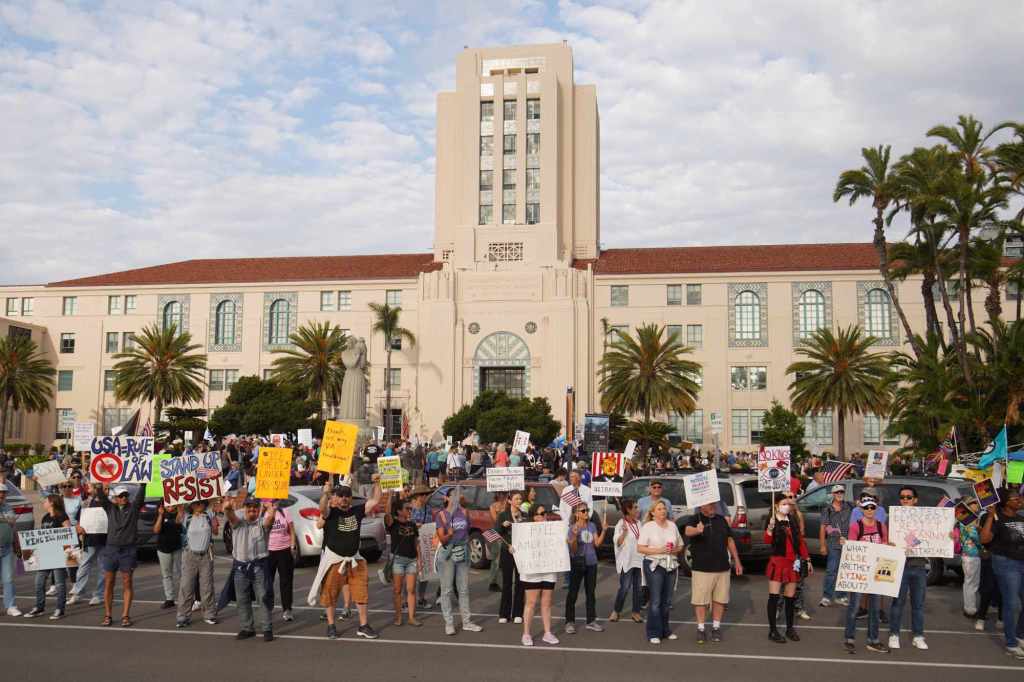Several hundred people turned out Thursday evening in downtown San Diego to take part in a bit of “good trouble.”
It was the largest of several Good Trouble Lives On protests throughout the region, and one of several nationwide. The event marked the fifth anniversary of the death of Rep. John Lewis, the Georgia Democrat and civil rights icon who often spoke of getting into “good trouble.”
Organizers said the local event was led by youth “who feel called to defend our civil rights, demand a democratic future, and honor the legacy” of Lewis.
Dane Culbreath, 17 and a rising senior at San Diego High School, told the crowd that he’d lost elections for two school-related offices but that he’d “won a lesson.”
“Power does not live in a title or a system,” he said. “Power is always with us, the people.”
Thursday’s rallies were in the vein of the No Kings protests, pushback to Trump administration policies and actions. An estimated 60,000 people showed up for that protest in downtown San Diego on June 14, a Saturday.
Among them was Otay Mesa resident Gilbert Solorio, who said excitement from the No Kings march motivated him and his kids to find the next local gathering. He said he’s unhappy with the nation’s handling of immigration, especially agents detaining people from his community. “This all makes me feel vulnerable,” Solorio, a first-generation Mexican-American, said.
Authorities estimated the downtown Good Trouble Lives On crowd to be around 500 to 600 people. Other rallies were slated throughout the region Thursday, including Mira Mesa and across North County, from Encinitas to Escondido.
At Waterfront Park, San Diego resident Ed Martin held a sign that read “hands off my VA healthcare.” He said he served in the U.S. Army in the early 1990s and that he’s frustrated with the Trump administration’s handling of veteran services, including workforce cuts.
“We put our lives on the line for this country, and now to have them slap us in the face, it’s a real discrimination,” he said. “It’s a real frustration.”
Downtown rally-goers also heard from recent high school graduate Daniel Hernandez, a member of the nonprofit San Diego 350. He shared that as a first-generation Chicano, he didn’t feel that he had enough “power to express myself in English nor in Spanish.” Overwhelmed by what he called “injustices of this nation,” he found inspiration from “actions of our beloved community and its members like John Lewis.”
As a young man, Lewis, the son of Alabama sharecroppers, took part in sit-ins at lunch counters, was a Freedom Rider, and chaired the Student Nonviolent Coordinating Committee known as SNCC.
During the Bloody Sunday march in support of voting rights in March 1965, he suffered a broken skull as he and others tried to cross the Edmund Pettus Bridge in Selma. The scene turned violent when authorities pushed the marchers back, and dozens, including Lewis, were hospitalized.
Lewis died of cancer in 2020. He was the first African American lawmaker to lie in state in the U.S. Capitol rotunda.
Originally Published: July 17, 2025 at 7:19 PM PDT
